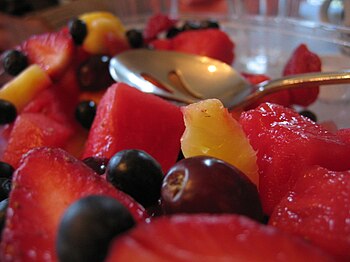You probably didn’t see what was so great about broccoli as a child, but the truth is that this vegetable is one of nature’s superfoods! From its stalk to its flowering head, broccoli is packed with nutrients and vitamins needed for your overall health and wellbeing - and it goes great in a wide variety of dishes. This vegetable has been around for centuries, and it has always been used and viewed as the perfect go-to food.
It’s healthy, can be eaten in a number of different ways, comes with lots of health benefits, is easy to cook, and offers the body a single boost of minerals in every serving. Here's some interesting information about broccoli for the cook and health enthusiast alike.
Understanding Broccoli from Top to Bottom
Many people aren’t aware just how much there is to know about broccoli. Yes, it’s a vegetable, and yes, it’s incredibly good for you—but that’s not all. This anatomical breakdown of broccoli should teach you everything you need to know about this vegetable and more. So, let’s begin with the basics.
What Exactly is Broccoli?
An edible green plant belonging to the cabbage family, broccoli is a vegetable that originated in Italy as many as 2,000 years ago. While, its flowering head is usually used as a vegetable in a variety of meals, the entire vegetable can be eaten and contains a host of nutritional values.
Arranged like a small tree, broccoli closely resembles cauliflower, which is another vegetable of the same species. Due to its rich green color, broccoli is high in antioxidants and other essential vitamins.
Parts of the Broccoli Plant
A broccoli plant is made up of three main parts:
• The root system
• Leaves and stalk
• The crowning head
When still in the ground, the root system of the broccoli plant needs nutrient-rich soil in order to grow and support the plant. Broccoli plants need to be watered often in order to keep the plant hydrated and well fed as it approaches maturity.
The leaves and stalk are lesser-known parts of the broccoli plant because gardeners and farmers often discard these pieces at harvest. However, they are actually edible and highly nutritious. Broccoli leaves can be long and thin or short and wide and grow along the stalk. They are often blue-green in color and thicken towards the head of the plant.
The crowning head is the part of the broccoli most familiar to people. Sometimes called the curd or the head, the top of the broccoli is most commonly eaten. This head is made of small, dense edible floral shoots. Usually, the head is harvested long before the shoots, or little florets open. Sometimes the heads are purple, but the green shoots are most commonly cultivated by gardeners. The best growth environment for the broccoli plant is in full sun, with plenty of water, and of course, the nutrient rich soil mentioned earlier.
What is Broccoli’s Nutritional Value?
Broccoli is a great food to eat when you are looking to get extra fiber and vitamin C into your diet. When grown in organic, nutrient-rich soil, broccoli contains various nutrients that hold anti-cancer properties and support a strong, healthy immune system.
A great source of natural energy, broccoli is low in carbs, and fat but high in protein.
Nutrients: It contains B vitamins, Thiamine, Niacin, Riboflavin and Folate as well as traces of calcium, iron, potassium, and phosphorous.
High Fiber: Broccoli is also high in fiber that supports heart health, helps lower bad cholesterol and supports healthy weight management because it is filling and very low in calories.
How is Broccoli Prepared?
Broccoli can be steamed, boiled, microwaved, stir-fried, or eaten raw. However, over cooking or boiling broccoli has been proven to reduce levels of anti-carcinogenic compounds present in the food. It is therefore best to eat it raw, or to steam it until it reaches a bright green color, but no longer.
How You Can Add More Broccoli to Your Diet
Adding broccoli to your daily diet can do wonders for your health. A side of broccoli at dinner, a broccoli salad for lunch, chopped broccoli along with eggs or in an omelet for breakfast, or even chopped and eaten raw as a healthy snack is great way to include this superfood in your diet.
All parts of broccoli can also be juiced, including the stems, leaves and heads, and it makes a great addition to green juice, along with kale, spinach, green apples, celery, cucumber, and lemon.
Be sure to check back later this week for some tasty broccoli recipes to try!













